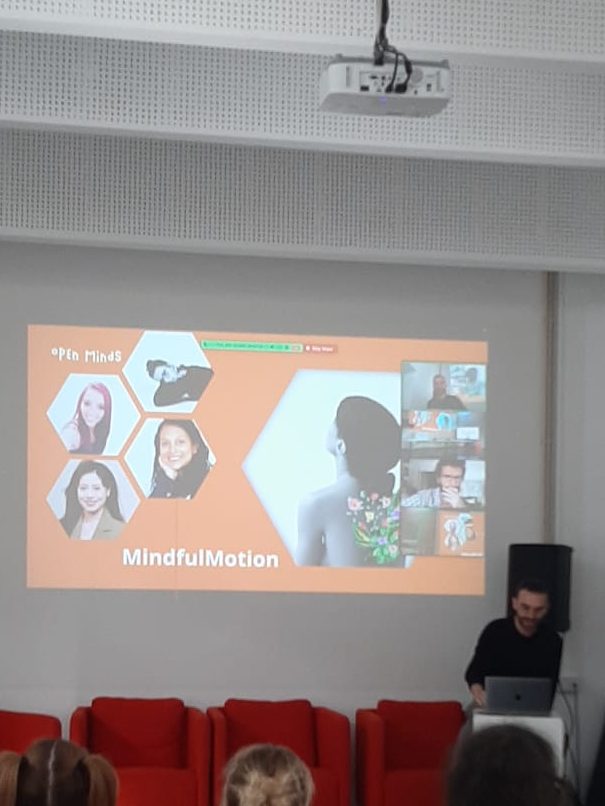A case study developed within the scope of the Open Minds project, using the deck of cards and the toolkit development board to solve the challenge: how to promote the Radical Inclusion of Autism Syndrome Disorder Level 1 people at the gym.
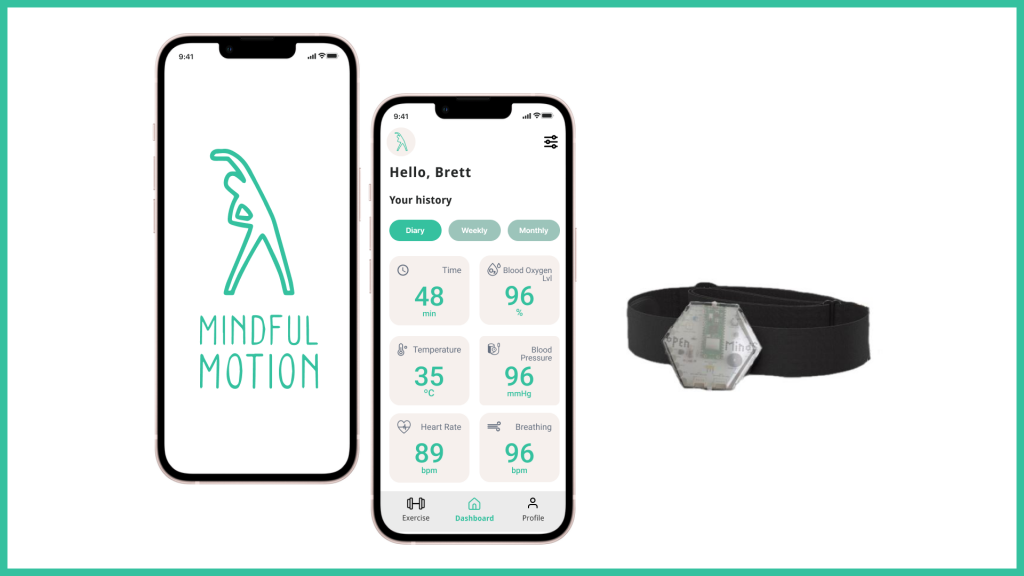
MY ROLE
As a UX/UI Designer I collaborated with all the research (desk research and interview), brainstorming, wireframing, user journey, and prototyping.
GOAL
Design a solution to the challenge defined by the Open Minds’ cards and use the toolkit to assure the radical inclusion of Autism Syndrome Disorder Level 1 people at the gym.
OPPORTUNITY
Autistic People Level 1 face some difficulties in work-out and feel comfortable doing it, especially at the gym. Create something to help them and at the same time not exclude them.
SOLUTION
We conceived a monitoring device using the Open Minds toolkit, ingeniously integrated into an elastic band worn around the chest, which seamlessly connects to a mobile app.
Context
Open Minds, funded by the European Erasmus+ programme, introduces a new educational methodology that teaches “Design for Radical Inclusion.” At its core is an inventive card game designed for collective brainstorming, coupled with a bespoke physical computing toolkit, allowing participants to prototype forward-thinking solutions.

Our group was composed of me, Maria Inês Rebelo, Nathaly Santos and ZiJing Cao. My colleagues are Phd and Master students at FEUP (Faculty of Engineering of the University of Porto).
The Portuguese team schedule was:
- Session 1: 13/07/2023 | in Porto, Portugal
3-hour introductory session: Introduction to Radical Inclusion / Design Principles / Practice-Based Research / Brainstorming using the Open Minds card game / Hypothesis Creation / Creating Digital Assets - Session 2: 20/09/2023 | in Porto, Portugal
3-hour introductory session: Introduction to Design Principles / Assumption Testing / Accessibility and Inclusion / Collaborative Prototyping - Creative Innovation Labs: 09/10/2023–14/10/2023 | in Porto, Portugal
Collaboration with participants from across Europe in a week-long immersive Creative Innovation Lab, developing and prototyping your design ideas: Hands-on prototyping using the Open Minds toolkit / International presentations / Experimentation and product development / Project presentations
Challenge
The concept of the project was triggered by 3 cards:
1 – the first one tells us about the persona: Brett, 22 years old and…
2 – Brett has Aspergers Syndrome (today known as “Autism Syndrome Disorder Level 1”)
3 – applied to a Gym Environment

Research
Our research process was divided into two steps:
- Reading of literature on the subject and
- interviews with autistic people
After we finished the research, we summarized some troubles and struggles in physical activity, like:
– Feelings of insecurity and inadequacy towards other gym members;
– Unwillingness to participate in group classes;
– Discomfort caused by the loud music and the “usual” genre of music played in these environments;
– Difficulty in organizing and managing their own personal space in the locker room;
– Difficulty in keeping up with specific timed exercises and making sure that the exercises are done properly;
– Hard time understanding information boards about the machines and exercises.
We also brainstormed some possible solutions to try to fix or at least help with these struggles.
Brainstorming
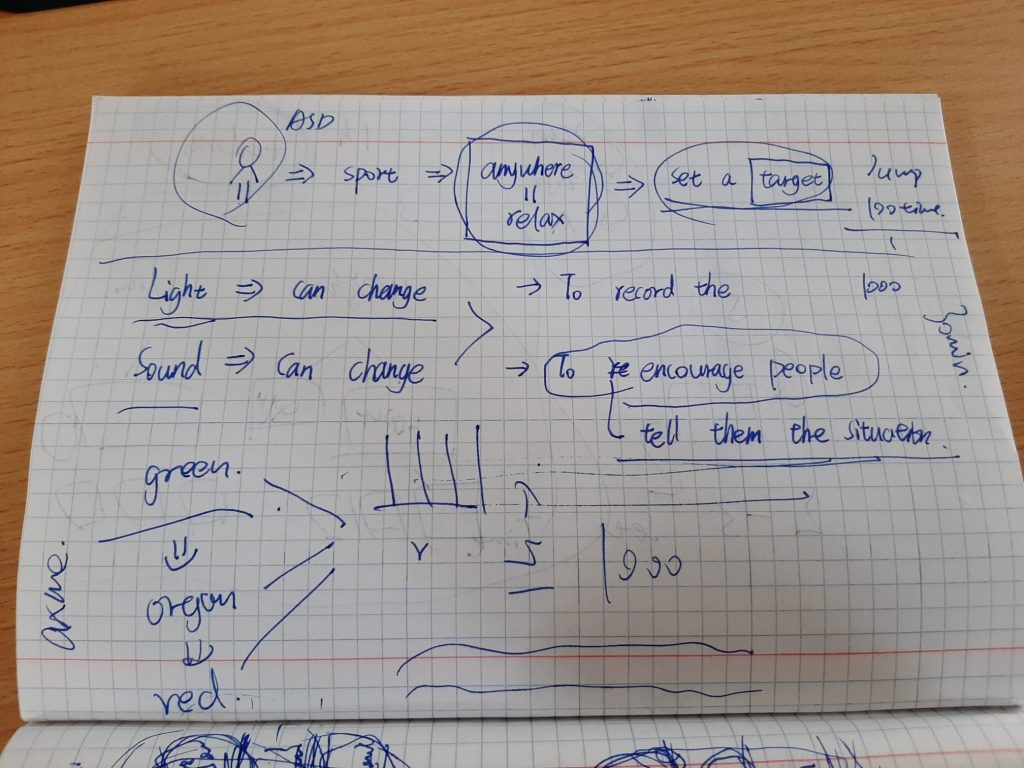
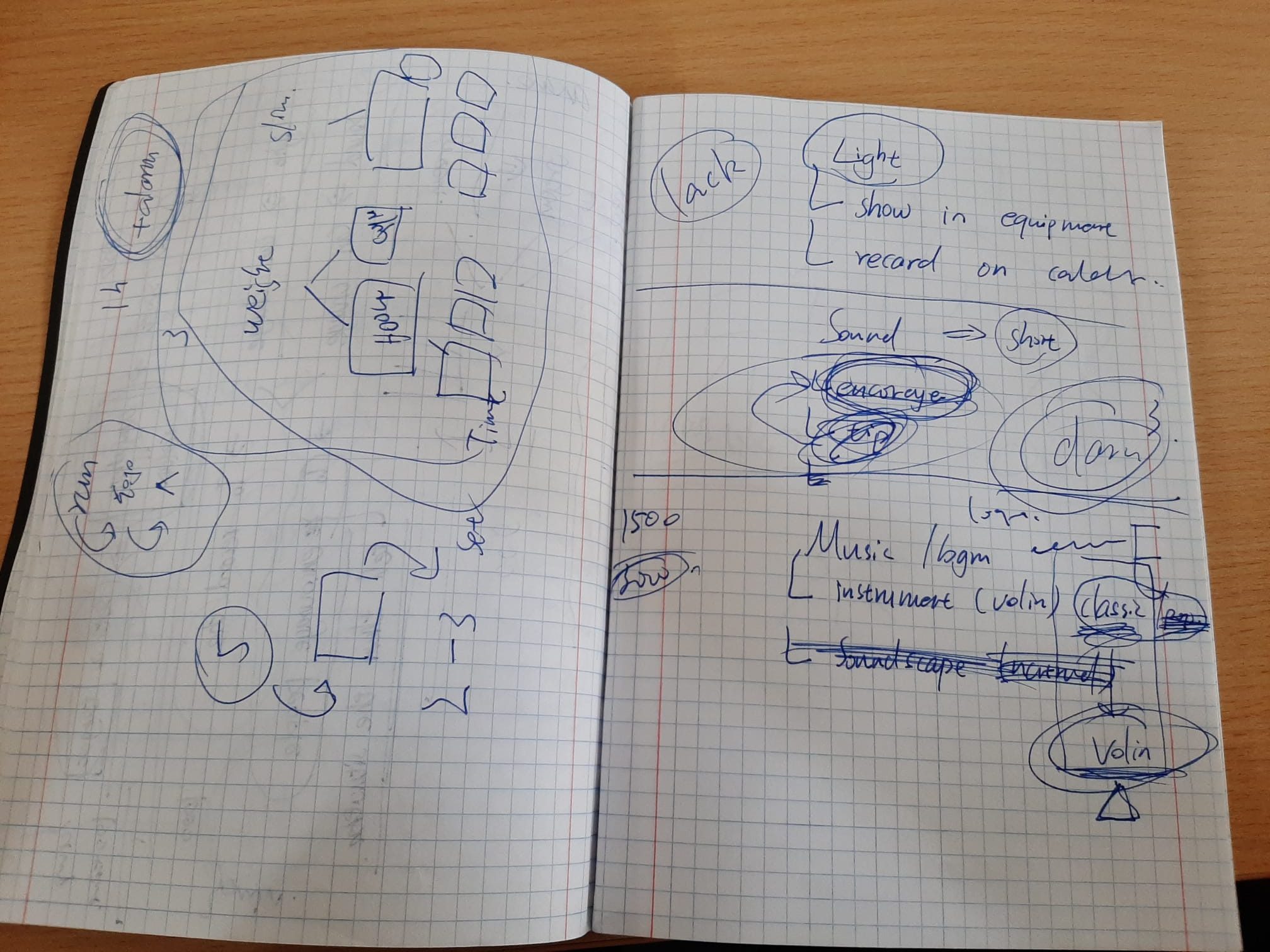
- Loud Music
- the gym app could have a feature that allows the user to choose the genre of music that they want to listen
- the gym app could gather the user information like their breathing and heart rate and ask for the user’s input about the duration and type of exercise they want to do, and with Ai the app could suggest a music playlist
- the gym app could include various music and sound options with binaural beats, which can help with concentration and reduce social anxiety
- Finding the correct gym machines
- Change the gym app to include an autism-friendly guide to finding the correct machine (integrated with light signals)
- Create a system to measure body signals (posture, breathing, and heart rate) with the help of body objects (like a chest band, for example)
- The gym app could include a list of videos with the exercises that are done on each of the machines, explaining the correct way to do the exercise, how to use the machine and the precautions to be taken (with body posture during exercise for example and other recommendations)
- Organizing/managing their stuff at the gym
- The gym app could include a recommendations guide (audio or video), as well as a step-by-step guide with small pieces of information to help the autistic person find their way around the gym and how to handle with their personal belongings and gym equipment
- Lights that cause eye discomfort (for autistic people with visual hypersensitivity)
- The gym app could suggest the use of glasses with a light filter or light intensity reduction filter, as well as having a brightness option that provides eye rest while using it in the gym
Other ideas:
- The gym app could include information about how many people are in the gym at the moment, and how many people are in each zone of the gym (cardio zone; stretching zone; muscle building zone; gym classes…)
- The gym app could include a list of videos or audios with exercises that can be performed in situations of intense stress, anxiety attacks and panic attacks, to help the autistic person achieve a state of calm and relaxation in a short period of time
Monitoring Device
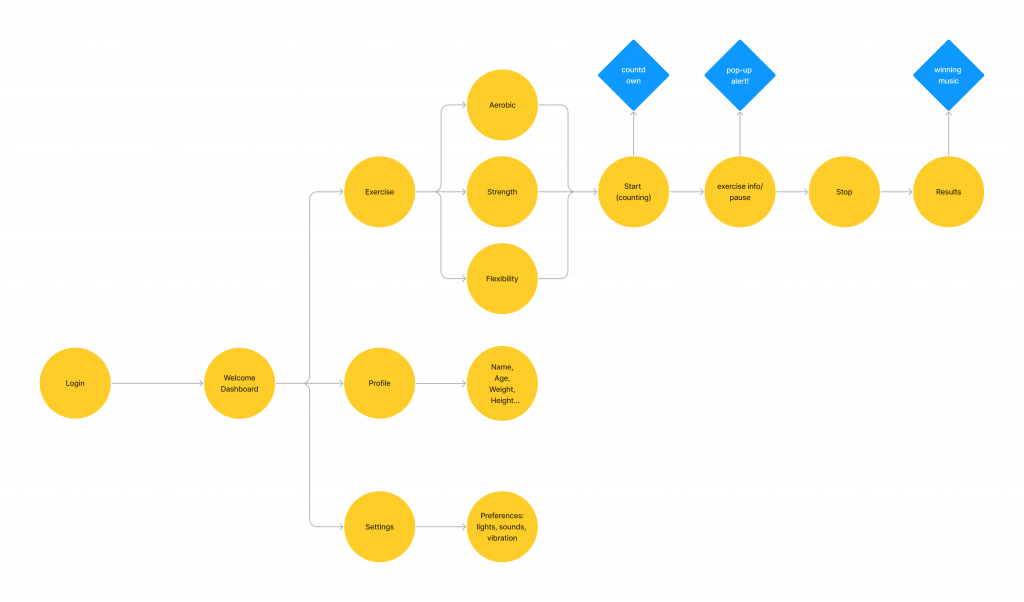
We decided to use the OpenMinds toolkit as a monitoring device attached to an elastic band to use around the chest, that connects to a mobile app.
This device can measure metrics like breathing, heart rate, and oxygen levels, which are tracked by the app. The device emits different signals like sounds, lights, and vibrations, that help the user to:
- Identify a possible problem during their workout – like a dangerous level of heart rate during the exercise;
- Stay motivated by emitting a motivating sound;
- Feel satisfied by emitting a winning sound when the exercise is completed.
Prototype
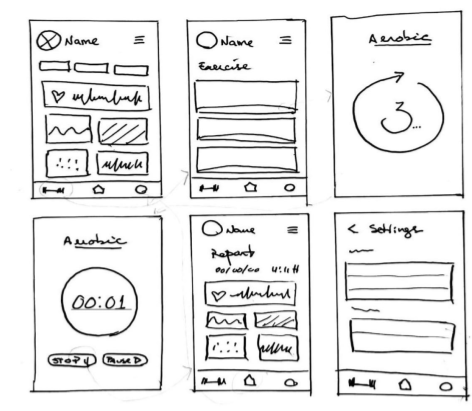
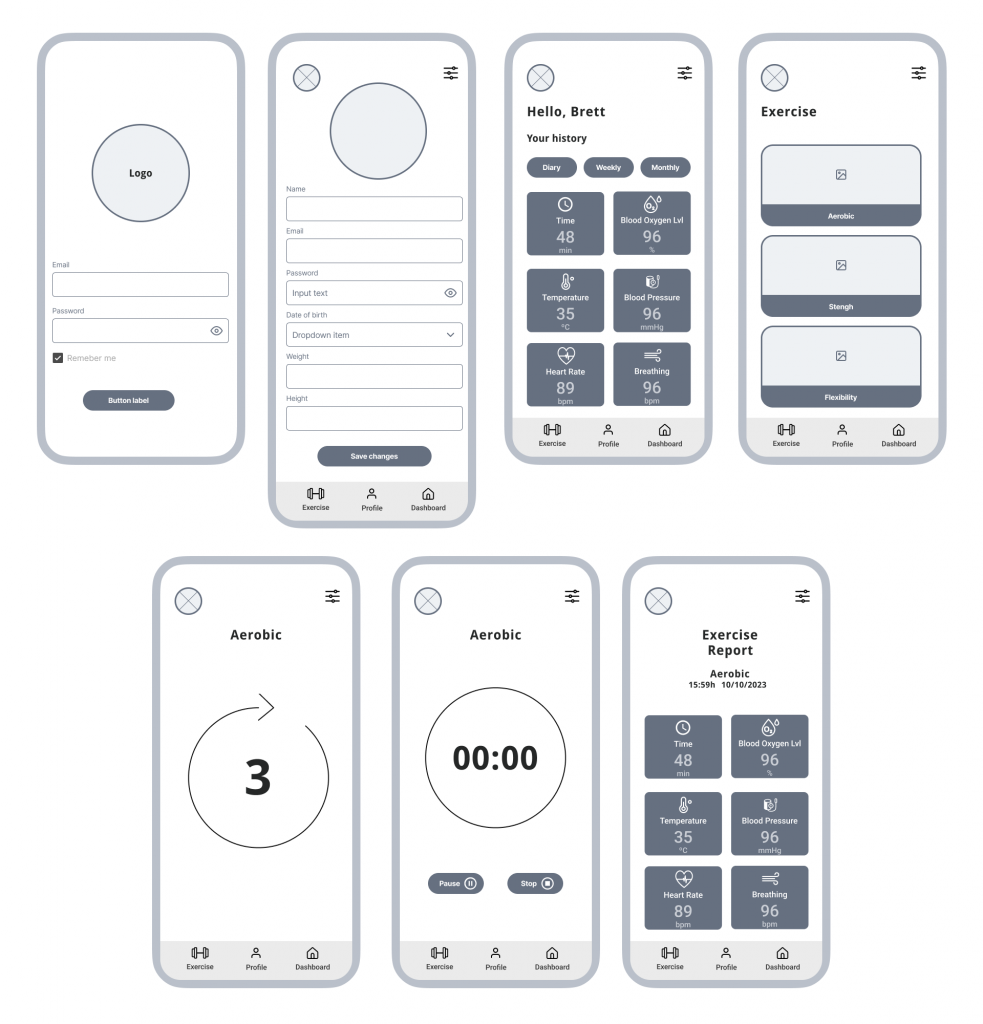
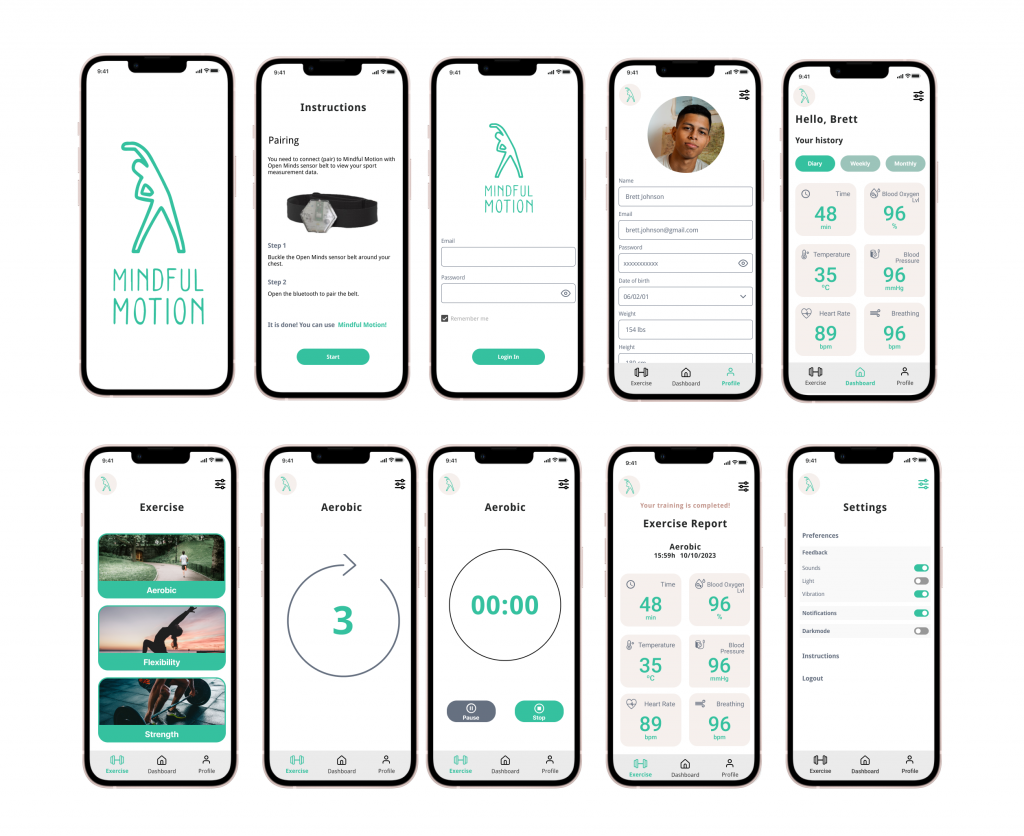
Presentation
